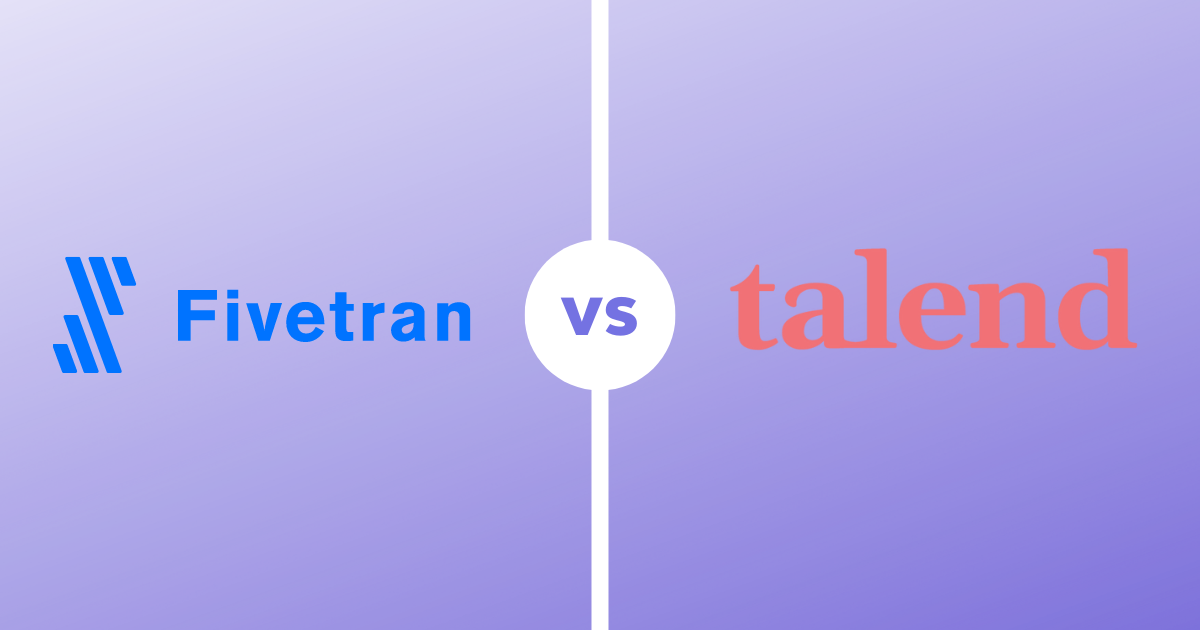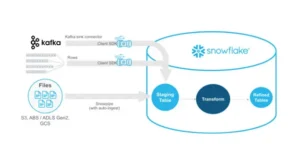
Top Data Integration Architecture Best Practices for Business Success
Best Practices for Data Integration Using Talend and Fivetran
Through this article, we aim to highlight how data integration services, which merge data across many sources, are crucial in today’s modern data management realm for organizations to be competitive and receive valuable knowledge.
Overview of Fivetran and Talend
Best Practices for Data Integration
1. Clearly define the requirements and goals for integration
Any data integration project must have well-defined targets and requirements before it can begin.
Recognize the key stakeholders, comprehend the integration’s business goals, and position the data sources according to importance and relevance. This clarity facilitates the design of efficient data processes, the selection of suitable tools (such as Talend or Fivetran), and aligning integration efforts with business objectives.
2. Select the Appropriate Integration Method
Batch, real-time, or a hybrid of both options are viable integrations; however, each of them must be chosen by addressing several primary parameters such as the size of the data, frequency of updates, and data latency requirements.
Fivetran is great at batch-based data replication with the additional features of automatic scheduling and monitoring. Talend allows both batch and real-time integration due to its scalability and adaptable architecture.
3. Evaluation and Preparation of Data Sources
Before integration, thoroughly evaluate and prepare data sources to ensure consistency and compatibility.
For data profiling and cleansing, you can use Talend’s different tools to appropriately identify and correct anomalies, duplicates, and missing information.
With growing concerns related to data security, more and more data compliance laws are being passed. One should ensure to put a data governance policy in place in your organization to ensure data integrity and compliance with laws like CCPA and GDPR.
4. Put Incremental Loading in practise
During data integration, incremental loading techniques minimize processing time and reduce the load on source systems.
Talend and Fivetran support incremental data extraction, in which only newly added or modified data since the last integration run is processed and put into the target data warehouse.
This method facilitates near-real-time analytics, increases efficiency, and improves the freshness of the data.
5. Mapping and Data Transformation
6. Monitoring and Error Handling
Employ effective error-handling and monitoring systems to track data integration task performance in real time. Talend and Fivetran offer comprehensive monitoring dashboards, logging features, and alert notifications to help users quickly identify and address problems.
Monitor important indicators like data throughput, latency, and the status of jobs completed to ensure that SLAs (Service Level Agreements) are consistently fulfilled.
7. Ensure Compliance and Data Security
Encryption, safe data transfer protocols, and access restrictions should all be used to maintain data security and compliance throughout the integration process.
To safeguard sensitive data and ensure compliance with legal standards, Talend and Fivetran provide integrated security measures.
Audit access permissions and data handling procedures regularly to reduce the risk of unauthorized access or data breaches.
8. Document Integration Workflows and Processes
Knowledge sharing, troubleshooting, and team consistency all depend on documenting integration workflows, data mappings, transformations, and configuration settings.
Use version control systems (like Git) to handle modifications and revisions. With clear documentation, transparency is improved, collaboration among stakeholders is facilitated, and scalability is supported when integration needs change.
9. Enhance Scalability and Performance
Use Talend’s parallel processing capabilities with Fivetran’s effective data replication methods to maximize the efficiency and scalability of data integration tasks.
Optimise integration processes to reduce latency, manage massive amounts of data effectively, and make the most use of available resources.
Evaluate and improve data pipelines regularly per performance standards and changing business requirements.
10. Constant Maintenance and Improvement
Data integration is an iterative process that needs constant optimization, upkeep, and monitoring.
Plan periodic reviews to evaluate the quality of the data, monitor system efficiency, and find areas where the process may be improved.
Stay updated with Talend and Fivetran’s upgrades and new features to take advantage of data integration advancements and stay competitive in a data-driven world.
Conclusion
Organizations must integrate their data effectively by utilizing Talend and Fivetran to utilize their data assets fully. Businesses may accomplish smooth data integration and ensure data consistency, quality, and reliability by following best practices, which include setting clear integration goals, selecting the appropriate strategy, carefully preparing data sources, and putting strong monitoring and security measures in place.
These procedures make data operations more efficient and provide organizations with the ability to make wise decisions, spur innovation, and stay competitive in the age of data.
As data complexity continues to grow, investing in reliable data integration services—such as those powered by Talend and Fivetran—is essential for facilitating effective data integration and analytics initiatives.
If you’re ready to embark on this journey and need expert guidance, subscribe to our newsletter for more tips and insights, or contact us at Offsoar to learn how we can help you build a scalable data analytics pipeline that drives business success. Let’s work together to turn data into actionable insights and create a brighter future for your organization.

Open AI GPT4 Oil Gas
How OpenAI GPT-4.5 Integration Is Changing Oil & Gas Operations In the past year, GPT-4.5 has evolved beyond chatbots and entered the world of heavy industry. For oil & gas

How LLMs Are Revolutionizing Text Mining and Data Extraction from Unstructured Data
Leveraging LLMs for Advanced Text Mining and Data Extraction from Unstructured Data Since digital transformation is growing exponentially, businesses generate huge amounts of unstructured data from sources like emails, PDFs,

How Businesses Use LLMs for Competitive Intelligence to Stay Ahead of the Curve
How Businesses Use LLM’s for Data-Driven Competitive Intelligence to stay ahead of the curve Competitive intelligence (CI) is essential for keeping a competitive edge in today’s fast-paced business world. Businesses

Maximizing Cost-Efficient Performance: Best Practices for Scaling Data Warehouses in Snowflake
Maximizing Cost-Efficient Performance: Best Practices for Scaling Data Warehouses in Snowflake Organizations rely on comprehensive data warehouse solutions to manage substantial volumes of data while ensuring efficiency and scalability. Snowflake,

Comprehensive Guide to Implementing Effective Data Governance in Snowflake
Mastering Data Governance with Snowflake: A Comprehensive Guide Data governance is a systematic way to manage, organize, and control data assets inside an organization. This includes developing norms and policies

Efficiently Managing Dynamic Tables in Snowflake for Real-Time Data and Low-Latency Analytics
Managing Dynamic Tables in Snowflake: Handling Real-Time Data Updates and Low-Latency Analytics In this data-driven environment, businesses aim to use the potential of real-time information. Snowflake’s dynamic tables stand out
